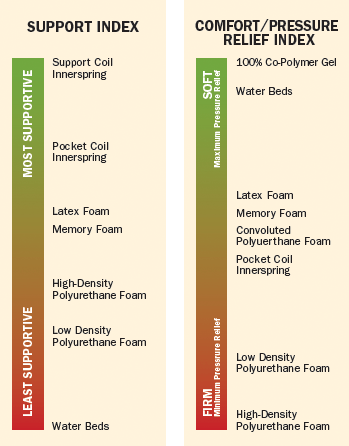 |
|
| ||||||||
|
|
|
June, 2012 They Sleep Well, They Get WellBy Shawn Clark That simple question, "Doc, which mattress is best for my condition?" might be more important than you think. Research shows most people are sleeping on the wrong mattress; one that is not supporting and cushioning properly. That means the excellent work you do during the day aligning some of your patients is being undone at night by their mattress. This can make some patients frustrated and lead them to question you and chiropractic care in general. Patients need advice about how to properly support their body during sleep. They are listening to retail mattress companies; getting bad advice and sleep related problems are growing. Recent studies show that sleep is a major health concern in the United States: 70 million people report they suffer from sleep related pain and, on average, we are sleeping 30% less than our parents did. Medical research has linked sleep problems with disease, especially diabetes, stroke and obesity. There are four stages of sleep and REM (rapid eye movement). Sleep studies show that at stages three and four, the brain nourishes and repairs the body. Hence the term "deep, healing" sleep. The use of sleeping pills and frequent tossing and turning, however, prevent the patient from experiencing deep, healing level sleep. Currently, there is no "go-to" health care professional recognized for providing accurate advice about sleep and the benefit of a wellness, quality mattress. The doctor of chiropractic armed with the research can fill this void. Mattress Structures The modern mattress is made of three parts.
So, we see that delivering the ideal sleep surface is a complex feat. If it was simply a matter of comfort, we would still be using feathers and straw like they did in early history. But, proper support means you have to put something that applies pressure to elevate the hip area into a mattress. But how do you get a mattress soft and firm at the same time? The innerspring was invented and revolutionized mattresses back in the 1920's because it provided a way to push the hips up into alignment. But that created pressure which led to new materials and synthetic foams to relieve the pressure. Water beds were once the rage for their comfort and adjustability, but they failed as sleepers realized they could not deliver proper back support. New foams like memory and latex or air are now trying to displace the innerspring support layer for today's mattress buyer, but third party research reveals these materials fall short when it comes to providing the support, material safety and durability that a mattress would ideally have. The following will show the research in the four critical areas of mattress technology and present some new ways to deliver a better sleep surface.

Back Support Mattress Research The core system, or support layer, of the modern mattress is what does this pushing and supports the back. The following chart shows how effective the different core systems are at pushing the hips up into the desired alignment position. By far, the best system is a quality support coil. Support coils are steel springs that are laced together so that they work in unison to prevent the hips from sinking too deeply into the mattress. In recent years, some mattress manufacturers have replaced these spring core system with foam. This creates a nice selling story of "no wonder your mattress is hurting you, it's full of steel springs." But, foam cores soften over time and lose their ability to support the body properly. For that reason, many patients who purchase beds that use latex or memory foam as their core material begin to feel back pain after a couple of year's use. Air beds are not included in this analysis because they provide variable support depending on the firmness setting. At soft settings, they provide poor support. At firm settings, they provide good support. Since they allow the user to self-adjust their "sleep number," most sleepers will choose to under inflate the air chamber sacrificing support for short-term comfort, thereby allowing the mattress to create an undesired spinal sag. That is what happened with water beds back in the 1960's and will probably happen again with air and foam core beds.
|
Chiropractic Events
|
||||
|
|
|||||